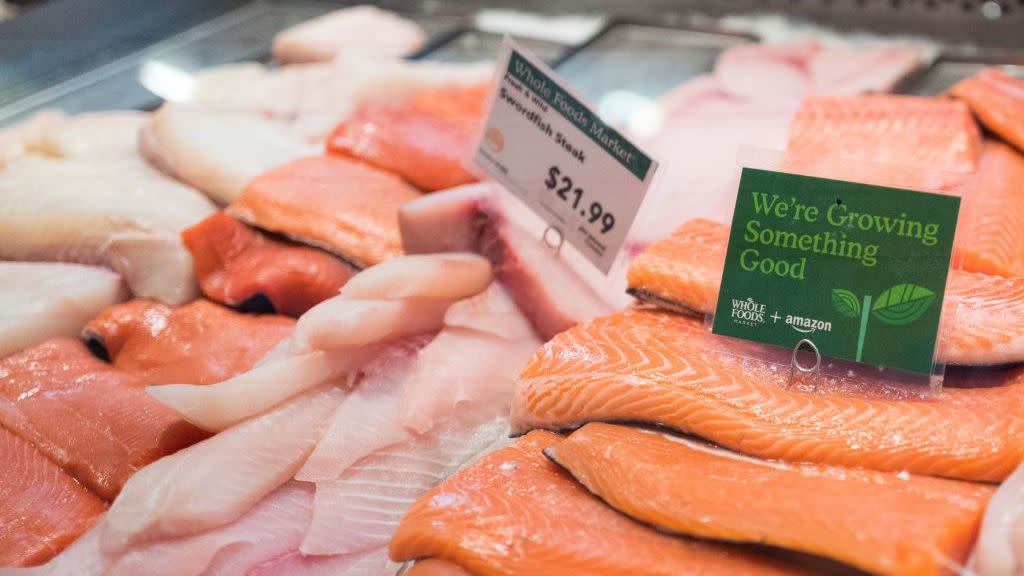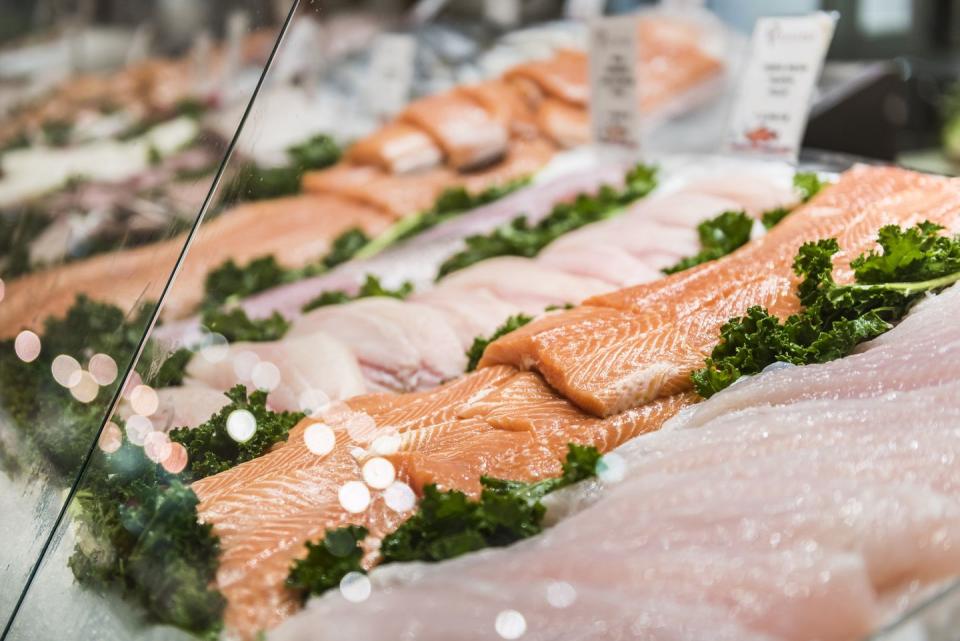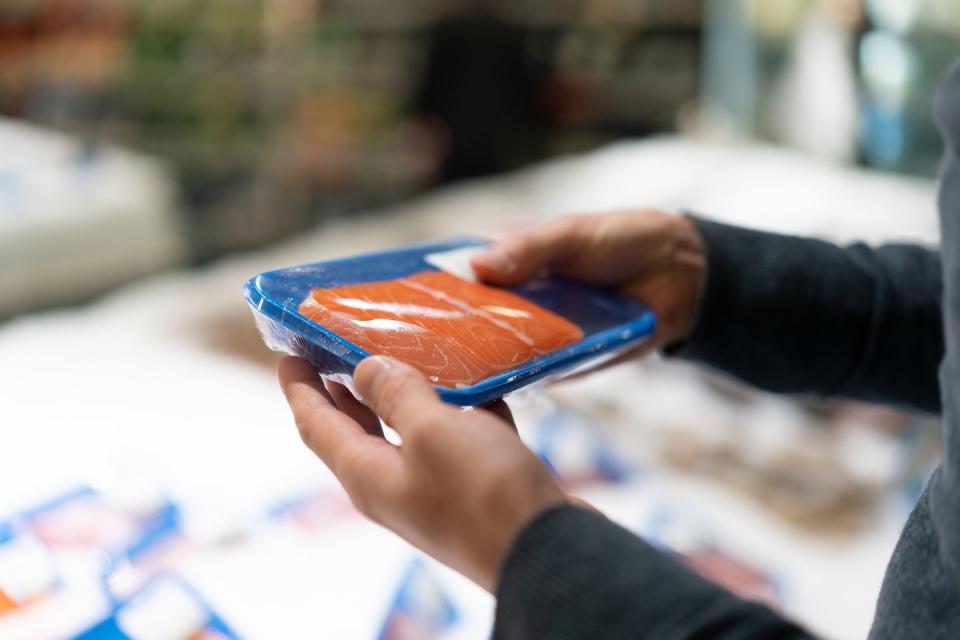Your Seafood Counter May Be Scamming You—Here's How To Avoid It

"Hearst Magazines and Yahoo may earn commission or revenue on some items through these links."
Seafood is one of the most versatile proteins you can cook. You can fry it, grill it, roast it, and even serve it raw. But beyond all those cooking methods, seafood also encompasses a broad swath of water-dwelling creatures.
If you regularly cook with fish, you probably think you can identify types of seafood based on its appearance. But as it turns out, there’s an entire corner of the industry banking on the exact opposite.
On TikTok, content creator Kat Mccue has posted a series of videos detailing a practice known as “fish fraud.” Through her work at the fish purveyor Wild Alaskan Company, Mccue has identified many of the different ways in which consumers can be misled at the wholesale, retail, and restaurant level.
That means there's a pretty good chance you've purchased and eaten fish that was incorrectly labeled as something else. The practice is more prevalent than you likely realize, but there are ways to avoid it. Here are all the different types of fish fraud out there and how to make sure you get exactly what you paid for.
What Are The Types Of Fish Fraud?

One of the most egregious forms of fish fraud is what the National Oceanic and Atmospheric Administration describes as the “bait and switch.” This practice, also known as substitution, is when vendors swap certain species of fish for one of lower value.
When fish is processed and sold as filets, it’s easy to sell catfish instead of grouper, or rockfish instead of red snapper. The FDA conducted a study a decade ago to genetically test fish sold to consumers, and they found 15 percent of wholesale fish to be mislabeled. This practice can happen either intentionally or as an accidental mix-up in the supply chain.
Fish fraud can also come in more subtle forms. Mccue has flagged that many vendors mislabel fish based on how it’s raised. This is especially common with salmon, which is frequently mislabeled as wild when it is actually farmed.
Shoppers may be aware that there are environmental, culinary, and nutritional benefits to eating wild salmon, but most lack the industry-specific knowledge to be able to properly identify those varieties. So producers regularly take advantage of this knowledge gap by dyeing farmed salmon to appear pink (yes, that actually happens) and mislabeling seafood as something that it isn't.
How To Avoid Fish Fraud

The two best ways you can clock fish fraud is doing your research about the seafood you’re buying and asking questions. The FDA offers a list of commonly mislabeled fish and their more affordable replacements. If any species on that list make an appearance on your weekly shopping list, it's worth digging into their market price and the visual characteristics you should expect.
When it comes to salmon in particular, there are a couple contextual clues to consider—and it all starts with the name they use. There are five different types of wild salmon that you should expect to find in an American grocery store. If your vendor doesn’t specify what type of wild salmon they’re selling, your alarm bells should start ringing.
Mccue compares it to selling apples without specifying if they are fuji or honeycrisp. Just like with fruit varietals, different types of wild salmon have their own unique characteristics and warrant specific labeling.
Another salmon descriptor that constitutes a red flag is “wild Atlantic.” That type of salmon simply does not exist in 2024 because of environmental regulations. And if your local seafood vendor doubles down on that designation, Mccue argues that you should be suspicious of any fish they’re selling.
Even if the practice of fish fraud makes you justifiably upset, Mccue stresses the importance of proceeding with kindness. “It doesn’t have to be an antagonistic exchange,” she explains in a TikTok. “People don’t always know what they’re talking about…and things get lost in translation along the way—whether intentionally or not."
You Might Also Like

